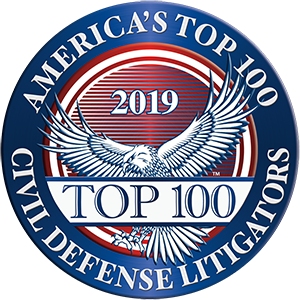By Brooke M. Pollard
The Corporate Transparency Act (CTA) is a new law that was issued in September 2022 and adopted on January 1, 2023. It creates a central registry of Beneficial Ownership of legal entities, including LLCs, and establishes reporting responsibilities of those who have Beneficial Ownership.
The CTA will go into effect on January 1, 2024, and it presents a significant change to the responsibilities of legal entities. Starting January 1, 2024, new entities will have to file a report within 30 days of their creation. Entities already in existence on January 1, 2024, will have until January 1, 2025, to file a report. There is no grandfathering of existing entities unless those entities are “inactive†as defined by the CTA.
Reporting entities to include corporations, limited liability companies, and partnerships. Each reporting legal entity is required to report:
- Entity name (and any alternative trade or d/b/a names)
- Business street address
- Jurisdiction of formation and, for foreign entities, the State or Tribal jurisdiction of registration
- A unique identification number (such as TIN, EIN, LEI, etc.)
- Individuals (or trusts) that have a Beneficial Ownership in the entity.
Beneficial Ownership is defined as “any individual who, directly or indirectly, either exercises substantial control over [the entity] or owns or controls at least 25% of the ownership interests of such [entity].” Information reported about individual beneficial owners includes:
- Full legal name
- Date of birth
- Current address
- Unique identifying number and issuing jurisdiction (e.g., U.S. passport, driver’s license, or state identification card)
- Image of document with identifying number
Alternatively, individuals and entities may apply for and obtain a FinCEN identifier in lieu of this information. FinCEN is currently designing and building the “Beneficial Ownership Secure System†to collect and store CTA reports.
Failure to comply with the CTA’s reporting requirements can lead to civil and criminal penalties, including a maximum civil penalty of $500 per day (up to $10,000) and imprisonment for up to two years. It is imperative that individuals (including trustees and other fiduciaries) who control legal entities (such as the Chief Executive Officer of a corporation or the manager of an LLC ) and trustees of trusts abide by these legal obligations.
There is a method for any person who has reason to believe that a report submitted by them contains inaccurate information to report and repair such inaccuracies. This person must voluntarily and promptly submit a report containing corrected information no later than 90 days after the date on which they submitted the inaccurate report.
This is a complex new law that affects corporate officers and trustees significantly. Corporate officers will have an ongoing responsibility to keep track of the ownership of the company, along with any potential indirect owners. Indirect ownership or control of a company may include a trustee, grantor/settlor, or beneficiary of a trust.
Trustees will be considered to have indirect control if they can dispose of trust assets. Moreover, any individual related to a trust with the power to dispose of trust assets may be considered as holding indirect ownership interests in reporting companies held by the trust.
If the trust has ownership interests in legal entities, then the Chief Executive Officer of a corporation or the manager of an LLC has significant reporting requirements to track. The legal reporting requirements to FinCEN for trusts is based on several factors.
- If the trust has a single beneficiary who is the sole permissible recipient of income and principal from the trust, then such beneficiary’s information must be disclosed.
- If the trust has more than one beneficiary, disclosure of information is only required of those beneficiaries who have the right to withdraw or demand distributions of substantially all the trust assets.
- If the settlor of the trust has the ability to revoke the trust or otherwise withdraw trust assets, then such settlor’s information must be disclosed.
Thus, in the right set of circumstances, an ownership interest held through a trust may require disclosure of the trustee, one or more beneficiaries, and the settlor of that trust. Presumably, the Chief Executive Officer of a corporation or the manager of an LLC will be responsible for tracking this information to make required disclosures of its owners.
Many governmental entities are entitled to this information. However, of most relevance to a trustee and the administration of a trust is that the Department of the Treasury, in connection with its official duties, including tax administration, will be able to access the records for each beneficiary.
It is the trustee’s responsibility to stay up to date on new regulations, and the CTA represents a significant change to the trustee’s duties. If you have any questions about the Corporate Transparency Act and how it may affect your trust, don’t hesitate to get in touch with TLD Law offices for more information or a consultation.
This article is intended to be for informational purposes only. This information does not constitute legal advice. The law is constantly changing, and the information may not be complete or correct depending on the date of the article and your particular legal problem. The use of information from this article does not create any attorney-client relationship.






